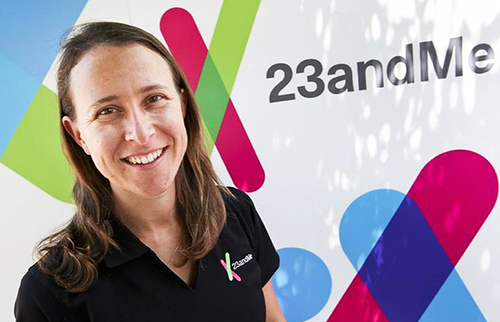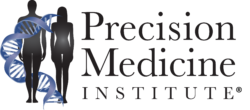Many innovative health networks report that more consumers are arriving in their primary care clinics with genetic test data, creating the need for primary care physicians to be educated about these tests and ready to discuss the results with these patients
Inexpensive genetic tests offered to consumers via online firms means hospitals and health networks are already feeling pressure to scale up their own genomic services. But what those services will be specifically, and how they will be offered to patients, remains a large question mark.
It is a recognized fact that consumers, by the millions, are purchasing their own genetic tests. In fact, consumer-initiated genetic testing is now one of the fastest-growing sectors of the American economy. This is a trend that has major implications for the CEOs of health networks and hospitals.
Services such as Ancestry.com and 23andMe.com offer genetic tests to consumers for less than $100, and advertisements for their services are ubiquitous—both on television and online. 23andMe became the first company to offer FDA-approved direct-to-consumer tests last year and 80% of its customers have consented to use their genetic data in scientific studies, according to Becker’s Hospital Review.
As more consumers gain easy access to information linked to their genetic data and eagerly crowdfund scientific research, these same consumers have expectations that their providers will be able to act on this genetic data in ways that improve patient care.
New Data Sharing Rules for Consumer-Oriented Testing Firms
One issue that needs to be addressed is the privacy of a consumer or patient’s genetic data. In anticipation of this coming boom, consumer testing sites have begun to tighten up their data-sharing rules. Their goal is to guarantee the same level of privacy afforded patients in hospitals and healthcare networks. Late last month, several private testing companies—including 23andMe and Ancestry—agreed to abide by a set of voluntary guidelines.
These guidelines include obtaining express consent from consumers before forwarding their data to other organizations, such as providers and employers, with an exception for de-identified data used for research purposes. Consent must also be obtained from consumers before they receive any marketing material based on their genetic data. And consumers also will be provided an easy way to access their genetic data on request.
Hospitals and Health Networks Are Playing Infrastructure Catchup—for Now
Meanwhile, hospitals and health networks are hacking their way through the gene sequencing wilderness, taking steps to establish infrastructure to receive and manage genomic data in a way that will enable them to support precision medicine initiatives.
“Most of our time is spent on the complexities of aggregating and sharing data and … HIPAA compliance,” stated Ankur Parikh, DO, Medical Director of Precision Medicine at Cancer Treatment Centers of America, in an interview with Health Data Management. He believes that the use of genomic medicine will spread in the coming years, from oncology to cardiology and other fields.
In order to take that giant leap forward, hospitals and health networks may also have to take a step back and revamp their legacy data systems. David West, CEO of Proscia, which has created an artificial intelligence-enhanced digital platform for pathologists, noted that many hospitals and health networks may have to better optimize data flow between their electronic health records (EHRs) and laboratory information systems (LISs). There are often data bottlenecks where the two databases meet.
“For hospitals in particular and healthcare more broadly, integration and interoperability [are] really the biggest headache for everyone,” West said. “A lot of the challenges have been with the EHRs themselves, because they’re often locked-in and [make interoperability] a challenge.”
But West sees some glimmers of hope. He noted that digital pathology systems have matured to the point where medical staffs are able to make sound treatment decisions based on the large amounts of data being stored and analyzed. A similar change also has taken place in radiology, he added.

In little more than a decade, Anne Wojcicki, CEO, (above) has taken 23andMe from an oddball genetic history service to owner of the first direct-to-consumer laboratory tests approved by the U.S. Food and Drug Administration. Late last year, 23andMe raised $250 million through an offering from Sequoia Capital and is valued at $1.5 billion. Its success in the consumer arena is pushing hospitals and health networks to pursue precision medicine initiatives. (Photo copyright: 23andMe.)
Crowdsourcing of Genetic Medicine Data for Precision Medicine Initiatives
In the meantime, providers are aggregating genomic data in other ways until applications catch up for individual hospitals and healthcare networks. One example is the American Heart Association’s Institute for Precision Cardiovascular Medicine, which is powered by Amazon Web Services (AWS), a family of on-demand cloud computing products.
AWS allows cardiac data—genomic and otherwise—gathered by hospitals and researchers through the country to be aggregated and analyzed through a cloud-based platform. The intent is to use the large volume of patient data to create treatments for a variety of cardiac health issues.
Another initiative by the Institute for Genomic Medicine at Columbia University’s College of Physicians and Surgeons is casting a wider net. It is focused on applications to treat epilepsy, eye diseases, kidney diseases, and even medical conditions that have yet to be diagnosed.
West believes these movements will all put pressure on EHR vendors to better integrate genomic and treatment data in the near-term, enabling hospitals to better fashion precision medicine initiatives. But whether the timeframe is two years or the better part of a decade remains to be seen.
Meanwhile, as more consumers order their own genetic tests, health networks and hospitals will realize that they need to get out in front of this trend. One requirement will be to provide education and training to the primary care physicians in their organization. That way, when patients shows up with both the results of a genetic test and research about the significance of the test results, primary care physicians will be better prepared to have an informed discussion with those patients, instead of being caught off-guard and unprepared.
Finally, at the upcoming “Precision Medicine for Health Network CEOs, Clinical Leaders, and Administrators” conference taking place Sept. 12-13 in Nashville at the Hutton Hotel, preparing primary care physicians for precision medicine services and genetic testing will be the subject of presentations by clinical leaders from such innovative health networks as Northwell Health, Vanderbilt University Medical Center, and the University of Florida Medical Center.
You can register by clicking here (or copy and paste this URL into your browser: https://www.precisionmedicineforhospitals.com).
—Ron Shinkman
Related Information:
Precision Medicine for Health Network CEOs, Clinical Leaders, and Administrators
Since 2010, 23andme Has Published 113 Papers
Precision Medicine Steps Out of The Lab and into the EHR
Use of Precision Medicine Is Expected to Scale Rapidly
